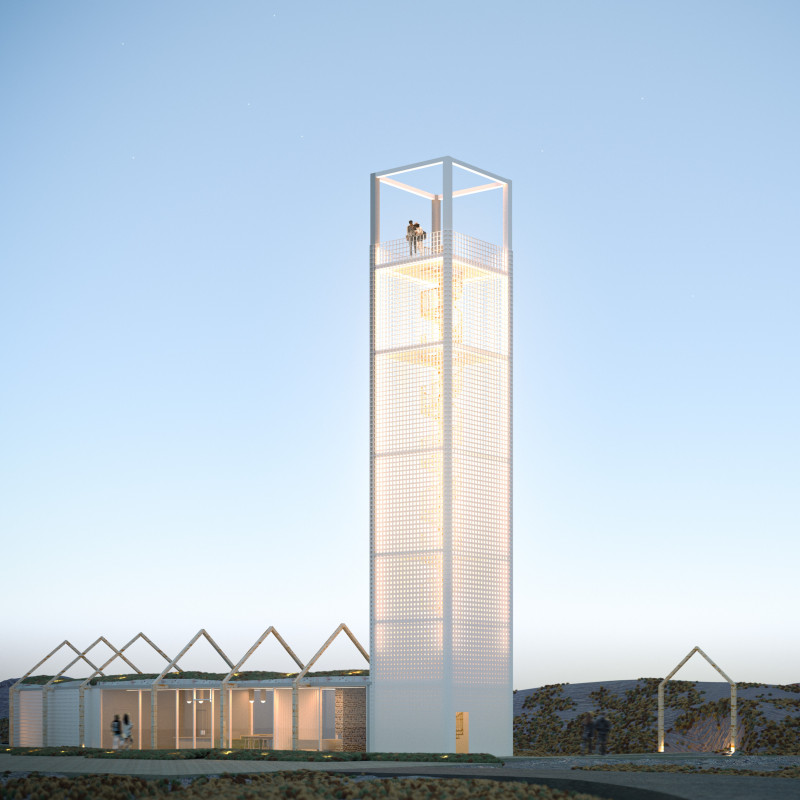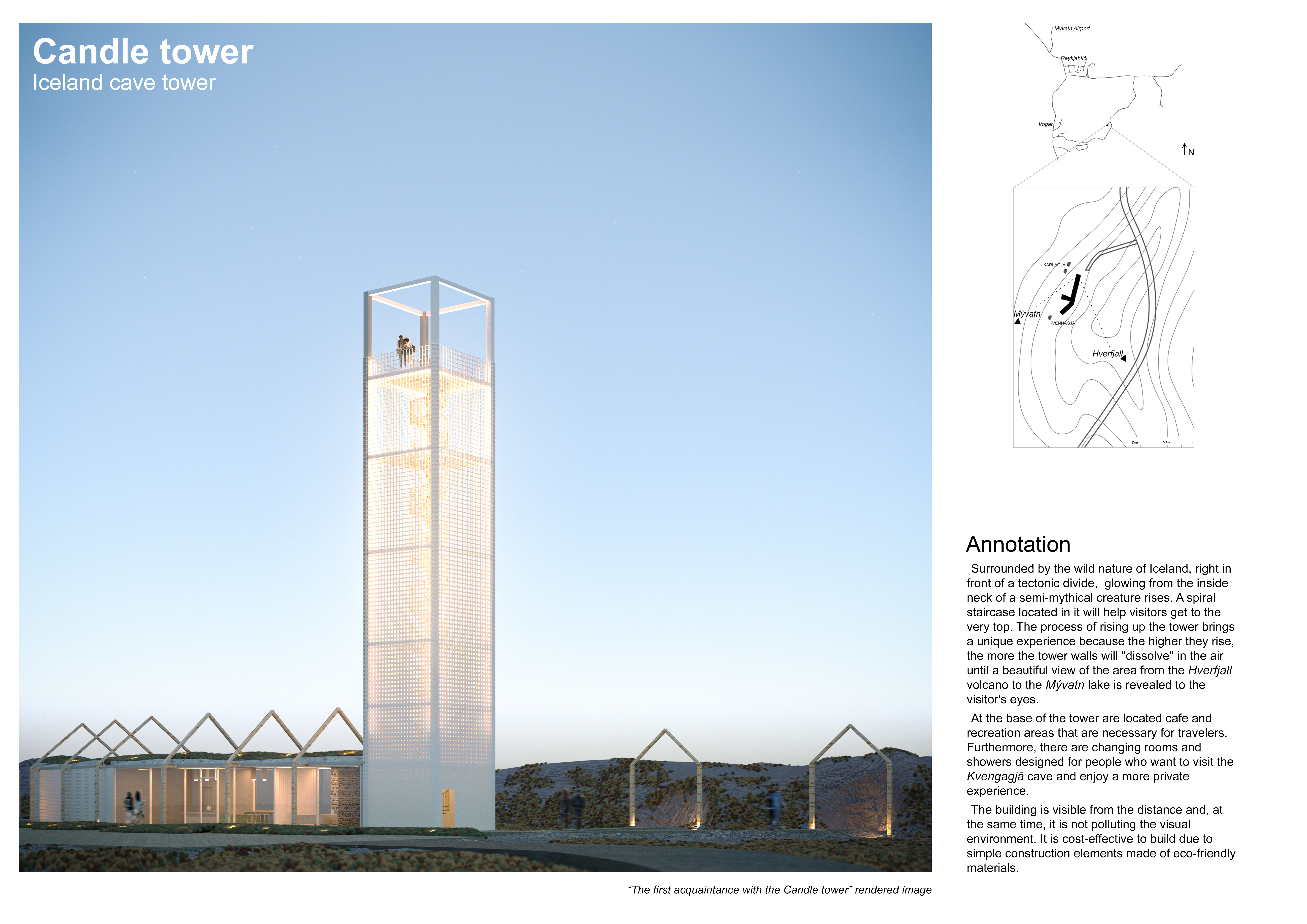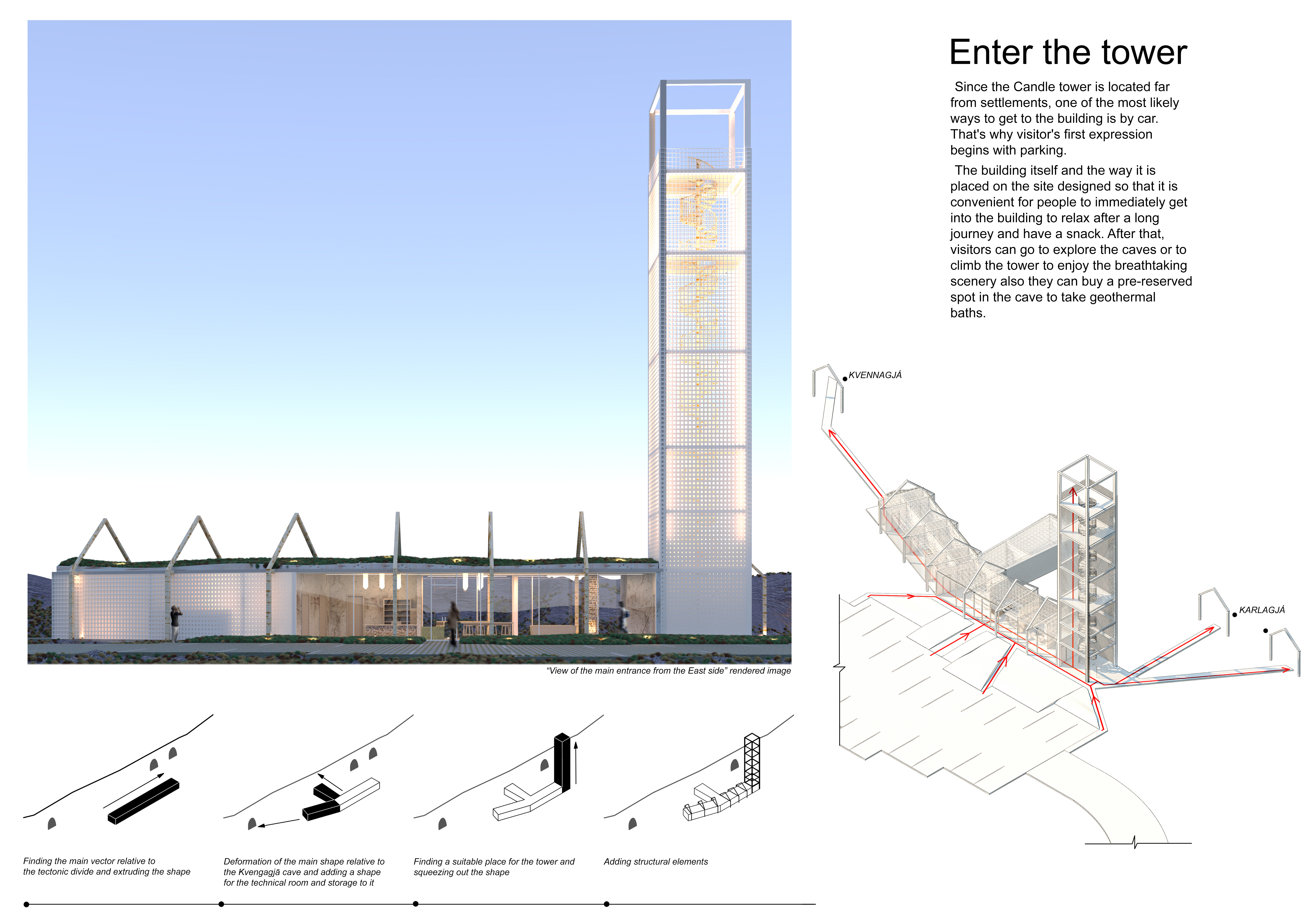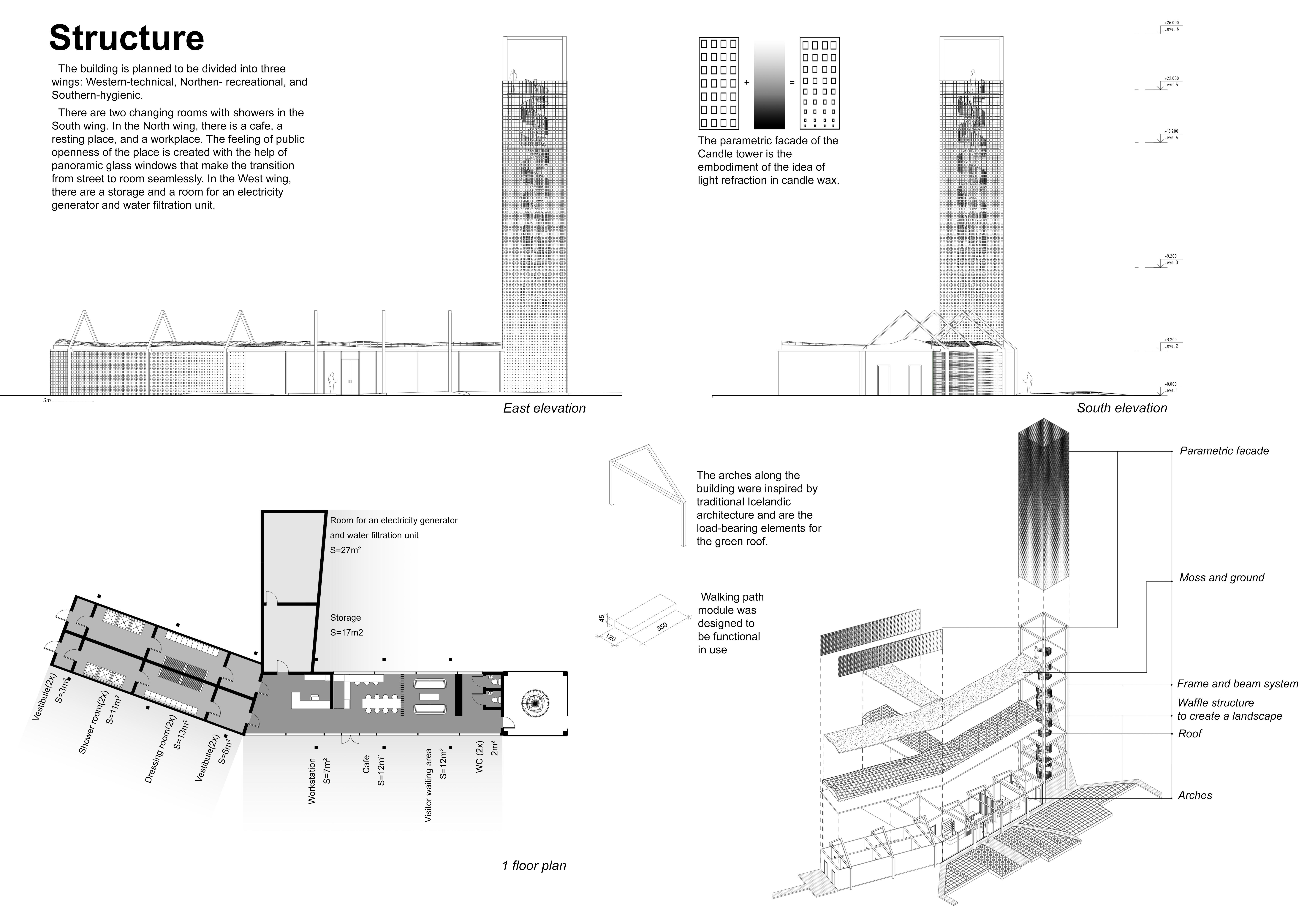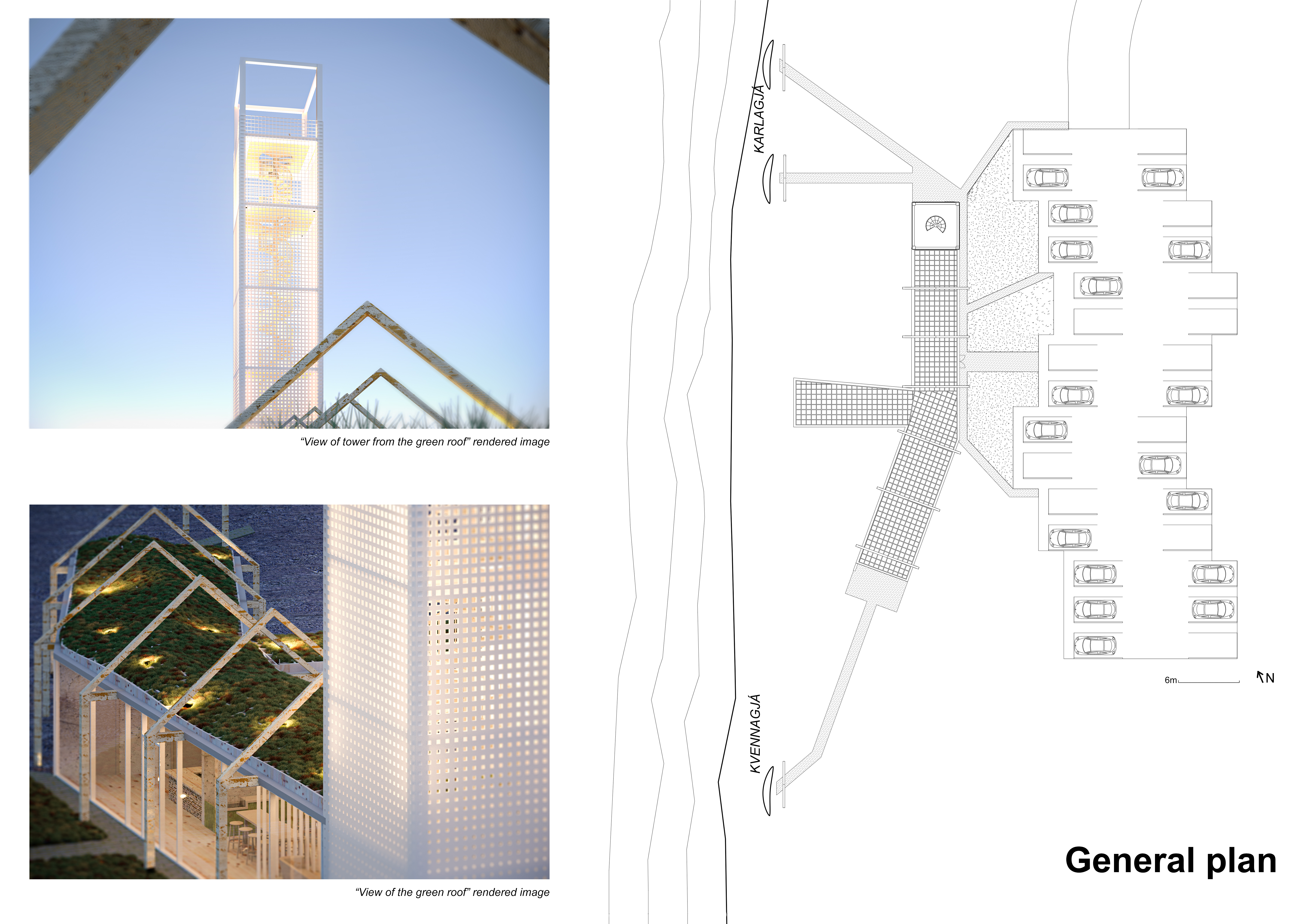5 key facts about this project
The Candle Tower is an architectural project situated near the Hverfjall volcano in Iceland. It serves as a functional hub for visitors exploring the nearby Kvengiðja cave while providing essential facilities for recreation and relaxation. The structure is inspired by Iceland's unique geological features and emphasizes a dialogue between architecture and the natural environment.
The Candle Tower comprises multiple interrelated sections, each designed with specific purposes in mind. The western wing is dedicated to technical operations, housing an electricity generator and a water filtration unit. The northern part accommodates cafes and resting areas, providing a space for visitors to recuperate before or after exploring the cave systems. The southern wing includes hygiene facilities and changing rooms, addressing the practical needs of users engaging in outdoor activities.
The architectural form of the Candle Tower is characterized by its parametric facade, which simulates the light-reflective qualities of candle wax. This facade not only enhances the aesthetic experience but also allows natural light to illuminate the interior dynamically throughout the day. The integration of a spiral staircase within the structure leads visitors to an observation area at the top, offering expansive views of the surrounding landscape, which includes the Hverfjall volcano.
Green roof elements integrate ecological benefits and ensure that the building visually connects with its environment. These unique design features contribute to the sustainability of the project while emphasizing a commitment to local materials and traditional craftsmanship. By blending contemporary architectural practices with cultural references, the Candle Tower exemplifies a thoughtful approach to design in a sensitive ecological context.
The project also reflects an understanding of visitor experiences. Each functional area is thoughtfully planned to provide comfort and accessibility, allowing users to engage fully with both the structure and the natural environment. The selection of materials such as reinforced concrete, glass, and wood contributes to the building's durability and aesthetic cohesion.
For more insights into the Candle Tower, including detailed architectural plans, sections, and designs, please explore the project presentation further. Understanding the architectural ideas behind this project can provide valuable perspective on the fusion of nature and design within the landscape of Iceland.


